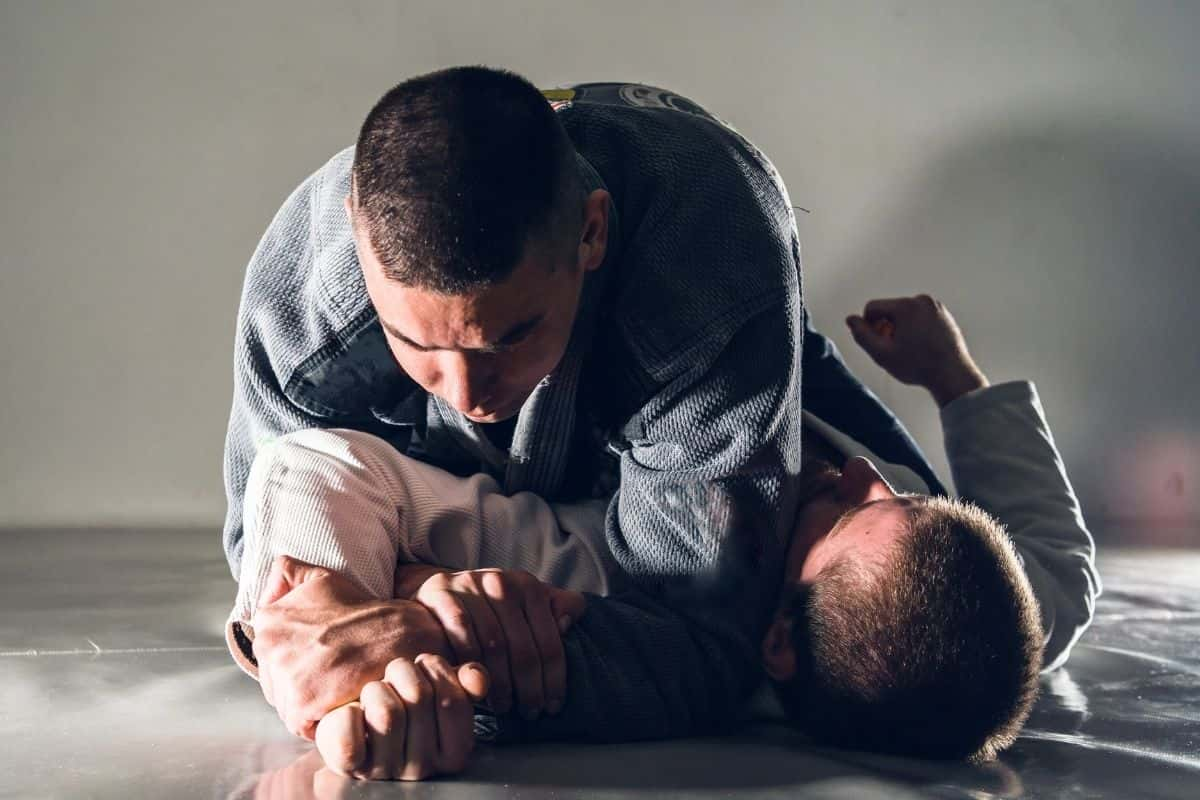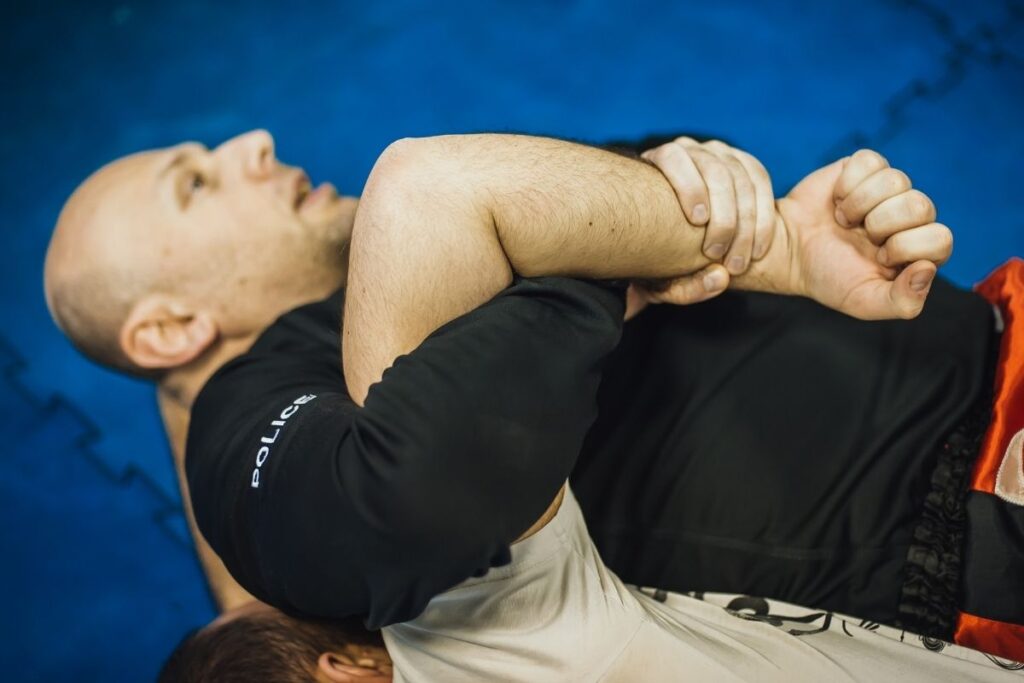The Kimura lock, also known as catch wrestling, wristlock, gyaku ude-garami in judo, or chicken wing, is a shoulder lock submission that’s specific to Brazilian Jiu-Jitsu. Kimura is a reminder of how brutal a Brazilian Jiu-Jitsu submission can be, despite the fact that Jiu-Jitsu is often referred to as “the gentle art”.
The Kimura lock is a versatile technique that has been used in catch wrestling, MMA, and Jiu-Jitsu. It has been a fundamental tool for control and submission for many years. Some notable Kimura lock Jiu-Jitsu specialists are Carlson Gracie, Eduardo Telles, Lucas Lepri, Alexandre Ribeiro, David Avellan, Rodrigo Comprido, Roberto Alencar, Rafael Lovato Junior, and Ronaldo Jacare.
History of the Kimura Lock
There had been similar positions that were seen in the Cambodian Khmer Temple that date back to the 12th century, as well as German fighting manuals that date back to 1520. Lorigo Morelli is often referred to as the creator of the double wrist lock; however, this position became famous in Brazilian Jiu-Jitsu thanks to Masahiko Kimura.
In 1951, the famous athlete Masahiko Kimura defeated Helio Gracie with this move in a legendary match. In Brazilian Jiu-Jitsu, the submission bears the name after this person.
Masahiko Kimura was the youngest fifth-degree black belt ever at the age of 18. He got a Judo black belt at just 5 years old! It has been reported that throughout his entire career, he only lost 4 matches.
At the age of 30, he was promoted to a seventh-degree Judo black belt. During his prime, he even beat opponents that were at a higher level than him!
Steps of the Kimura Lock
The Kimura lock or, as it’s known in wrestling, the double wrist lock, is a lock of the shoulder. Mechanically, it’s very powerful and sound since it’s done with two arms against one. The mechanics that are used are pretty simple, which makes it a technique that’s suitable and effective for every level.
To begin executing the Kimura lock, you can follow our steps below!
- One of your arms should be deep inside the arm of your opponent, across their shoulder
- Your shoulder should be placed on top of the shoulder of your opponent
- Wrist of your opponent should be gripped by your other arm
- Hand that went through your opponent’s arm should connect with the arm gripping the wrist
- Arm of your opponent should be bent behind their back
- No matter the position, you need to angle your body in a way that all of your weight is behind the forearm of your opponent
Despite being a common misconception, the Kimura lock shouldn’t be used only for submission, but instead, it should be used as a position of control, where you can open up for other attacks and manipulate your opponent.

Using the Closed Guard Kimura Lock
Something that’s a staple of Brazilian Jiu-Jitsu is the closed guard Kimura lock. When people sign up for Brazilian Jiu-Jitsu, it’s one of the first moves that they learn.
The idea is to place a grip by making your opponent post one of their arms to the side. You can look to the angle of the side that you’re attacking and get back on the ground once you have the grip. You just need a small adjustment when opening the guard. One of the submission options that’s the most reliable is getting the Kimura from the bottom half guard.
The arm you’re attacking needs to be on the ground, just as with the closed guard Kimura lock. A very dominant Brazilian Jiu-Jitsu position that offers a lot of options for attacking is the side control. Even though the Kimura lock is just one of the positions that you can transition to from there, it’s still a reliable option.
The Kimura Trap System
David Avellan developed the Kimura Trap System in 2012. The Kimura trap system is a submission system that was created so every position possible in combat can use the kimura lock, no matter the amount of submissions, passes, sweeps, transitions, takedowns, and takedown counters!
What’s special about this approach, since the techniques that make up this system have already been used on their own in the past, is that they have now all been combined into one coherent technique.
The Kimura lock has been used by the Kimura trap system without going for a submission finish right away. The Kimura lock is a powerful control position to transition from other sweeps, guard passes, and submission. Even though this system doesn’t require every exchange to end in a Kimura finish, it does encourage its use for effective transitions, immobilization techniques, and effective counters.
Final Thoughts
The Kimura lock has a proven track record and legendary history, even though it might look like any other shoulder lock submission. If it’s implemented with the right mechanics by the opponents, the Kimura can cause great damage due to the fact that it’s a brutal submission.
The Kimura lock is a move that has managed to withstand the test of time and is very efficient in every aspect of competition. To enhance the effectiveness of your Kimura, make sure to use the details we’ve provided in this article and look at our site for more information!

